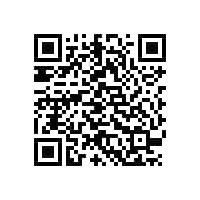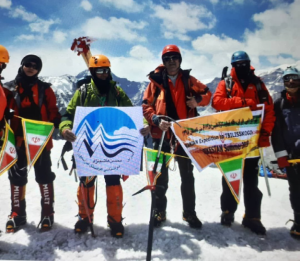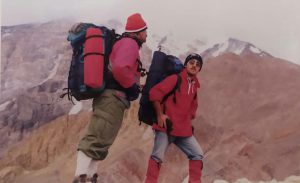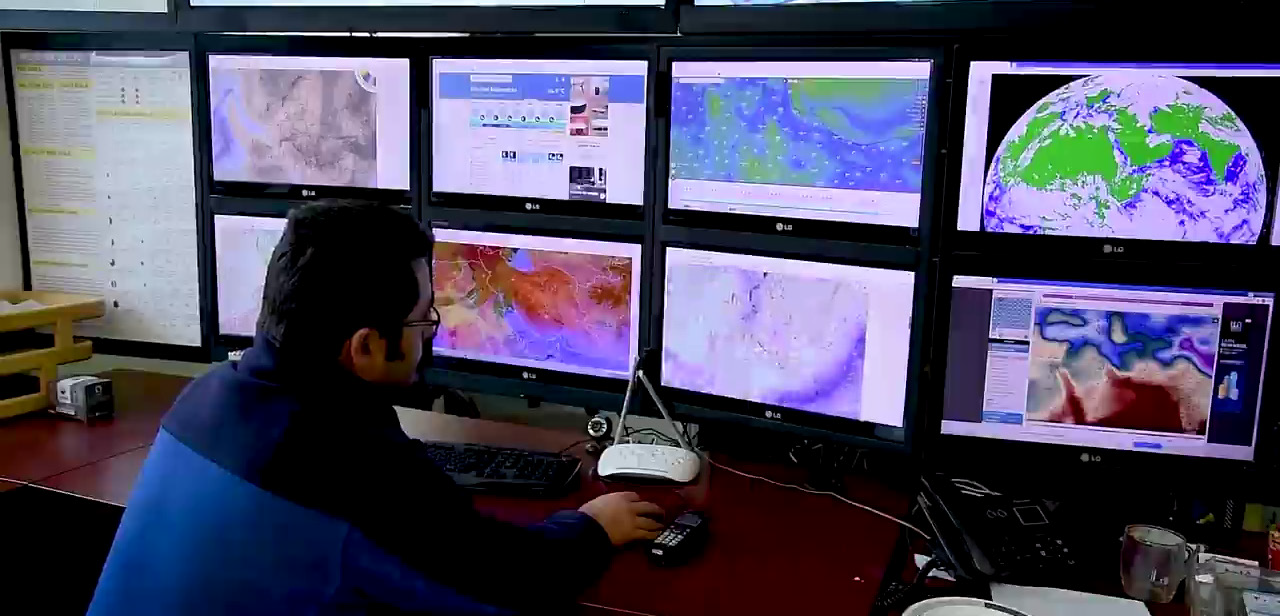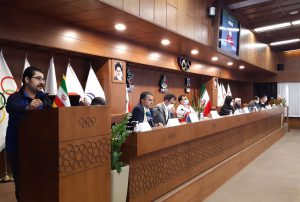By: Trends Editorial Team
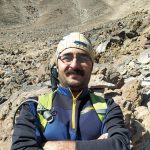 Mohsen Hashem-Nezhad was born on May 5, 1979. He studied Geology, followed by a postgraduate degree in Climatology from University of Zanjan. He started climbing in 1989 for personal reasons, alongside Professor Hamid Qorbani, who introduced him to high altitudes.
Mohsen Hashem-Nezhad was born on May 5, 1979. He studied Geology, followed by a postgraduate degree in Climatology from University of Zanjan. He started climbing in 1989 for personal reasons, alongside Professor Hamid Qorbani, who introduced him to high altitudes.
What made you interested in meteorology?
I grew up learning about the field because of my father who headed the Zanjan Department of the Meteorological Organization. I would accompany my father and watch him do expert work, and so I grew interested in meteorology before I started school. I gradually developed a fascination with nature, clouds, rocks, and plants and was able to orient myself in meteorology because of my father’s job.
What is mountain meteorology? What prompted you to pursue mountain meteorology?
Different equipment, such as a thermometer, is used to record and collect atmospheric data to be transferred and processed at a center. This is done through equations written based on atmospheric dynamics to create models and project how the atmosphere changes. This process, known as weather forecasting, is the basic concept of meteorology.
The best-known branch of the field is urban meteorology. Within the urban settings that we have developed, atmospheric changes bring about restrictions but not hazards. In mountain areas however, several factors create complications. Firstly, mountain atmosphere is largely unknown due to a lack of advanced meteorological equipment. In addition, activities and occupations at high elevations involve greater risk owing to the distance from cities and facilities, and faster and more severe atmospheric changes. Inaccuracies in weather forecast that cause limitations in cities can, therefore, lead to threats at higher elevations and endanger the lives of climbers, rescuers, and pilots.
I entered this line of work because I was lucky enough to learn about mountains from Professor Qorbani and about meteorology from my father. This sparked the idea to fuse these concepts because although several books had already been written on the topic, I had a different level of application in mind.
Having read these books, I started working on ways to supplement the data, or in other words to make them more applicable. To do this, atmospheric changes need to be comprehended. While some of these changes are rarely witnessed in urban settings or occur for short periods, they can last longer on mountains and have physiological effects on the body.
The style of climbing Professor Qorbani and I started was unique, in that we would choose severe weather to climb and imitate the common mistakes that mountaineers make. Being affected by atmospheric conditions would help us come up with solutions and strategies to deal with them. We examined different mountains in Iran in different seasons and gathered information about the mountains and ridges and investigated the impact of atmospheric phenomena, depending on properties of the area.
Have you delivered any training courses in the field?
I created a general model of atmospheric data and issues related to the application of mountain weather forecast in 2012. In 2014, I joined the Mountaineering Federation, where I held training courses as an official instructor, teaching climbers, rescuers, pilots, and others with related occupations. To date, we have held approximately 900 courses and trained over 23000 people in state and private organizations and different institutions.
Do you offer any other services besides instruction?
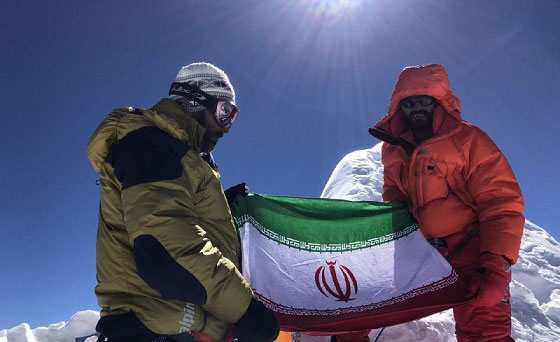 There are different divisions in the field, which include instruction, support, and weather forecast. We offer support for international climbs, at heights of 7000-8000 m, and for rescue and relief missions after mountain accidents. This entails round the clock ground and aerial aid in situations where weather changes can be influential. An example is the crash of flight 3704 (Tehran- Yasuj), when we supplied constant support for 128 days without any incidents.
There are different divisions in the field, which include instruction, support, and weather forecast. We offer support for international climbs, at heights of 7000-8000 m, and for rescue and relief missions after mountain accidents. This entails round the clock ground and aerial aid in situations where weather changes can be influential. An example is the crash of flight 3704 (Tehran- Yasuj), when we supplied constant support for 128 days without any incidents.
Please expand on the methodology applied in mountain meteorology.
Mountaineers and rescuers need two types of meteorological information, namely forecasting and nowcasting. The weather forecast we are most familiar with and is available on websites and news outlets is prone to error. The error margin that must be assumed when predicting future weather can be life threatening at high altitudes.
We train people to use nowcasting, which is forecasting on a very short term of a few hours. We have therefore, armed them with a tool to determine the accuracy of the forecast they have received, and the upcoming changes. The more skilled a person is, the more dynamic their decision making before severe weather can be and the more effective the management of their expedition.
Please give us some examples of your work in mountain meteorological support for rescue missions.
Mountain areas are prone to accidents. An example is the crash of flight 3704 (Tehran-Yasuj), which collided with Mount Dena at an altitude of 4200 m. Recovery of the plane wreckage was made possible through atmospheric data, during the first weather window after days of deteriorating weather conditions. Weather windows are those short intervals of expected suitable weather conditions, during which projects like climbing and rescue missions can be carried out at mountain areas.
The search and rescue mission lasted 128 days, during which the bodies and plane parts were transported to the mountain foot. We supplied constant support throughout the period and although the mission was done at high altitudes in winter, there were no accidents.
Last winter there was another unfortunate accident that claimed the lives of two coaches who were trapped in the heights of Mount Alam (Alam-Kuh). Several aerials, rather that ground-based, rescue missions were launched because the possibility of snow and avalanches had rendered ground routes impassable. It took us over forty days to recover and return the bodies to their families.
There were also times when we supported missions professionally. On December 6, 2017, an accident happened in Kooleh Jonoo, Lorestan, which is the second most technical mountain in Iran. Of the 14 climbers, 11 fell and 9 did not survive the fall.
A similar accident occurred in similar weather conditions and roughly the same area. Having been contacted, we made exact forecasts and provided support and relevant operational detail to stop the 2017 mistake from happening again. Despite the harsh conditions and the risks, the mountaineers managed to leave the area without injuries.
Are you also involved in support for ascends to the world’s most prominent summits?
One area that proved hard for me to enter was direct support for international climbs to summits at heights of 7000 and 8000 meters. Such as cends leave no room for errors on the part of the meteorologist, as a minor error can put the climbers’ life in danger. Our work to provide professional and direct support was unprecedented in Iran. We have since given support in climbs to most 6, 7 and 8-thousand-meter peaks even in other continents. These include Aconcagua in Argentina, Himalayan peaks and the 7 and 8-thousand-meter summits of the Tian Shan Mountain range that runs between China and Russia. We have had over 60 successful support missions.
Do you have a particular approach to understand mountain conditions and atmospheric phenomena?
Professor Qorbani and I began conducting field observations in mountain areas such as ridges, drainage divides and summits in severe weather conditions and created a series of guidelines and recommendations by integrating the data. Atmospheric phenomena are at times constant while the trails and the type of mountain dictate different guidelines and strategies. In addition, several mountain phenomena rarely occur in urban areas or do not last long. For example, freezing fog, which can be extremely
dangerous in mountain areas, is seldom seen in cities. We managed to amalgamate our findings on climbing routes and weather phenomena to provide climbers and rescuers with guidance and training to ensure climbing and rescue safety.
What message do you have for the readers of the interview?
There are problems facing anyone taking a step towards a goal. I would like to encourage anyone with an objective they believe to be righteous, ethical, and altruistic to have perseverance, and with God’s help they can push through obstacles. My message is peace and health for all.


